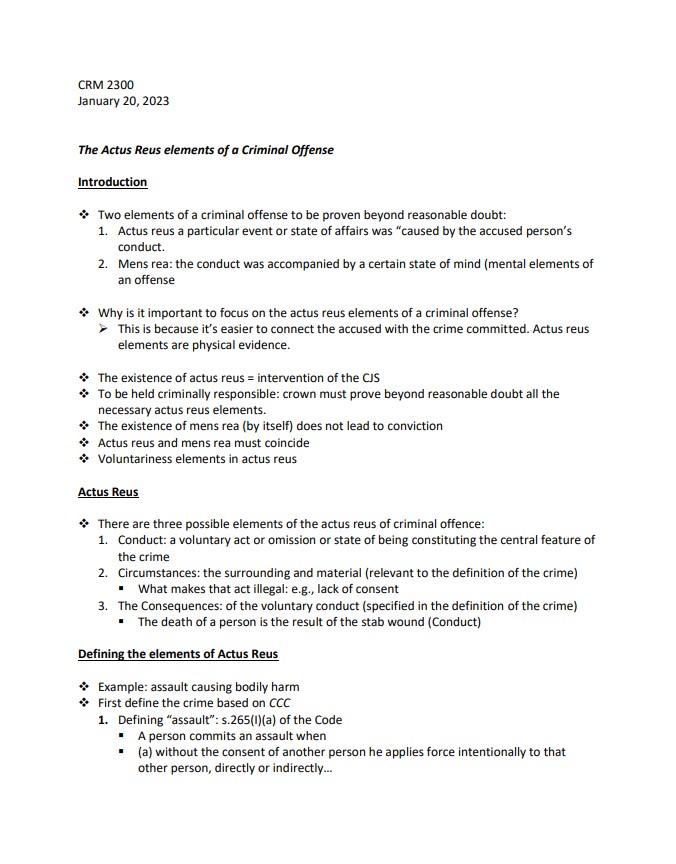Criminology Notes
Summary:
This document contains comprehensive notes on Actus Reus and Causation in the Canadian Criminal Code of Justice concerning criminal law.
- The first note is from CRM 2300 – The Actus Reus Elements of a Criminal Offense
- The second note is from CRM 2300 – Lecture 3 (Causation in Criminal Law)
Excerpt:
The Actus Reus Elements of a Criminal offense
Introduction
Two elements of a criminal offense to be proven beyond a reasonable doubt:
1. Actus reus a particular event or state of affairs was “caused by the accused person’s conduct.
2. Mens rea: the conduct was accompanied by a certain state of mind (mental elements of an offense)
Why is it important to focus on the actus reus elements of a criminal offense?
This is because it’s easier to connect the accused with the crime committed. Actus reus elements are physical evidence.
The existence of actus reus = intervention of the CJS
To be held criminally responsible: the crown must prove beyond a reasonable doubt all the necessary actus reus elements.
The existence of mens rea (by itself) does not lead to conviction
Actus reus and mens rea must coincide
Voluntariness elements in actus reus
Actus Reus
There are three possible elements of the actus reus of a criminal offense:
1. Conduct: a voluntary act or omission or state of being constituting the central feature of the crime
2. Circumstances: the surroundings and material (relevant to the definition of the crime)
What makes that act illegal: e.g., lack of consent
3. The Consequences: of the voluntary conduct (specified in the definition of the crime)
The death of a person is the result of a stab wound (Conduct)
Defining the Elements of Actus Reus
Example: assault causing bodily harm
First, define the crime based on CCC
1. Defining “assault”: s.265(I)(a) of the Code
A person commits an assault when
(a) Without another person’s consent, he applies force intentionally to that other person, directly or indirectly…


Reviews